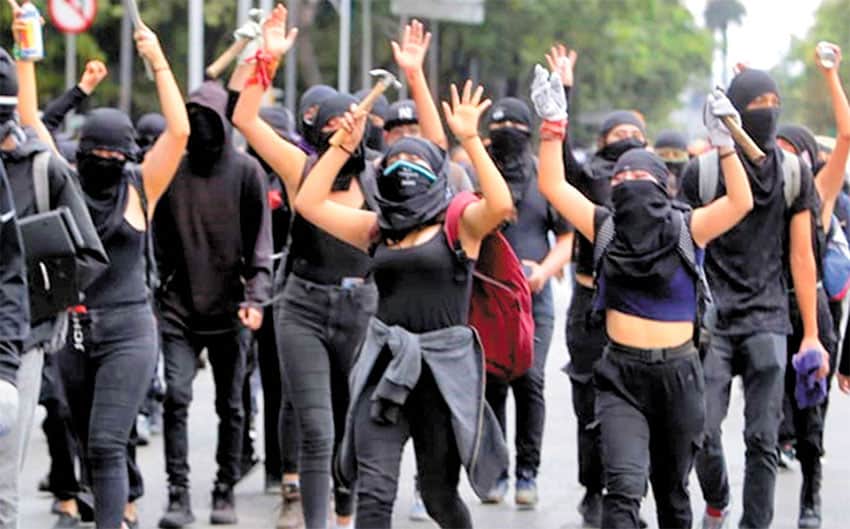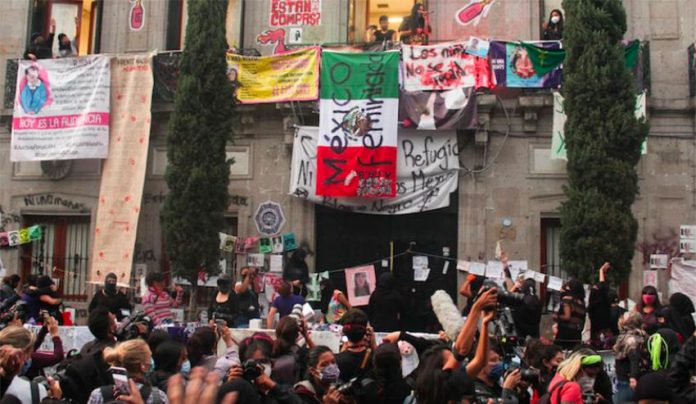As women continue to gather and demonstrate across Mexico — acts which generate controversy just as much as they garner support — what nobody is questioning is the endemic scale of violence historically suffered by women in the country, which continues to be beaten, burned, forced, and cut upon their bodies and minds, today, right across the republic.
Damningly, both statistically and in the eyes of the watching world, the United Nations has rated Mexico as one of the most dangerous places for women to live. More locally, the National Institute of Statistics and Geography (Inegi) has reported that 45% of all women surveyed reported suffering violence at the hands of their partners.
Given that domestic violence is traditionally underreported for fear of repercussion, one can only guess at the real scale of that figure.
Yet even with heightened awareness of the danger faced by women every day, the uptick in femicides continues its upward trend. A report by Justice in Mexico on organized crime and violence in the country, released in July of this year, revealed that femicide — the murder of a woman because of her gender — has seen a rise of 130% since 2015.
In 2019, Mexico reported its most violent year on record for women, and between January and June of this year alone, 473 cases of homicide were officially classified as femicide.
While this does partly mesh with the fact that 2019 was a record year for violence in Mexico for both men and women, figures pertaining to violence against women are likely to be diminished by underreporting of cases, the impunity of abusers, and the lack of funding of attorney general’s offices in Mexico.
Measures taken by the state to rectify issues of funding and inconsistent penal codes have proven to be woefully insufficient. While President López Obrador has outwardly expressed outrage at the levels of violence against women, he has also sanctioned the slashing of funds given to the National Institute of Women amidst coronavirus austerity measures, and has threatened to withdraw government funding from shelters operated by non-profits.
This at a time when restriction of movement as a result of the pandemic means that women are forced to spend more time in spaces which are dangerous and abusive, or working for low pay in unsafe conditions.
Trying to appeal to the authorities, a group of relatives of victims of sexual abuse visited the National Human Rights Commission (CNDH) on September 2. When their pleas were not heard, one of the women, Marcela Alemán, tied herself to a chair and refused to leave. Within a week, amidst growing media attention, the self-styled “House of Refuge,” known as the Okupa, had begun its existence as a refuge for women — and their families — who have suffered gender violence.
At its zenith, the feminist occupation of the CNDH stirred great debate on social media, among political groups, and in mainstream media. Garnering broad support across Mexico, the Okupa Cuba Casa Refugio, or Cuba Occupation Shelter House (the name Cuba coming from the name of the street on which it is located), or the Okupa for short, and ongoing protests speak to a deep rage at the lack of justice for women, despite government promises of change.
A series of high profile femicides which garnered a great deal of media attention catalyzed an increase in the militancy of activists, and increasingly radical protest tactics, including graffitiing monuments and occupying the CNDH.

What the Okupa has dragged to the forefront of the Mexican social consciousness is this: the state has no solutions to gender-based violence and has very little inclination to look for them. The issue, then, is a structural one, which has its roots in the patriarchal system and the pervasiveness of machismo culture across Mexico.
A legal and social context which intersects at many levels of society generates the conditions in which femicides and other violence against women can occur. Penal codes on femicide vary between states, complicating the prosecution of perpetrators, and meaning that victims of gender violence are further discriminated against by the justice system.
Moreover, while the concern cuts across all demographics and affects all women, migrant, disabled, and working-class women, as well as women of colour, are disproportionately affected, and have fewer resources to leave abusive situations and seek support.
However, like all political movements whose significance takes on a life of its own, the Okupa has since been riven by disagreements, not least the declaration by the Bloque Negro in late October that transgender women would no longer be welcome in the space. It was a jarringly inconsistent political move which saw trans women — already at a greater risk of violence — marginalized and excluded from a space declaiming itself as a hub for safety.
There arises, therefore, a tension between the sweeping political message which lies at the heart of the protests, and the disparities and disagreements within the movement which have driven several women away from the Okupa.
As is often the case, the truth lies somewhere in the middle. The CNDH Okupa sparked protests and activism across the country and, for a brief time, united the feminist movement across Mexico. But while the symbolic resonance of the Okupa cannot be downplayed, the idealized narrative of a movement representative of feminism in Mexico generally is as deeply flawed as any other.
What is important is that the occupation and the protests should be linked to a broader fight. Amid the global #MeToo movement, the women of Mexico, including those involved in the Bloque Negro, know that justice will not come from the same institutions which are complicit in crimes against women.
Nor is the problem limited to Mexico: as eruptions onto the streets across the globe in recent years have made clear, violence and discrimination directed at women is systemic and facilitated by institutions, politicians, and governments, who are willfully deaf to desperate pleas for action.
Shannon Collins is environment correspondent at Ninth Wave Global, an environmental organization and think tank.
